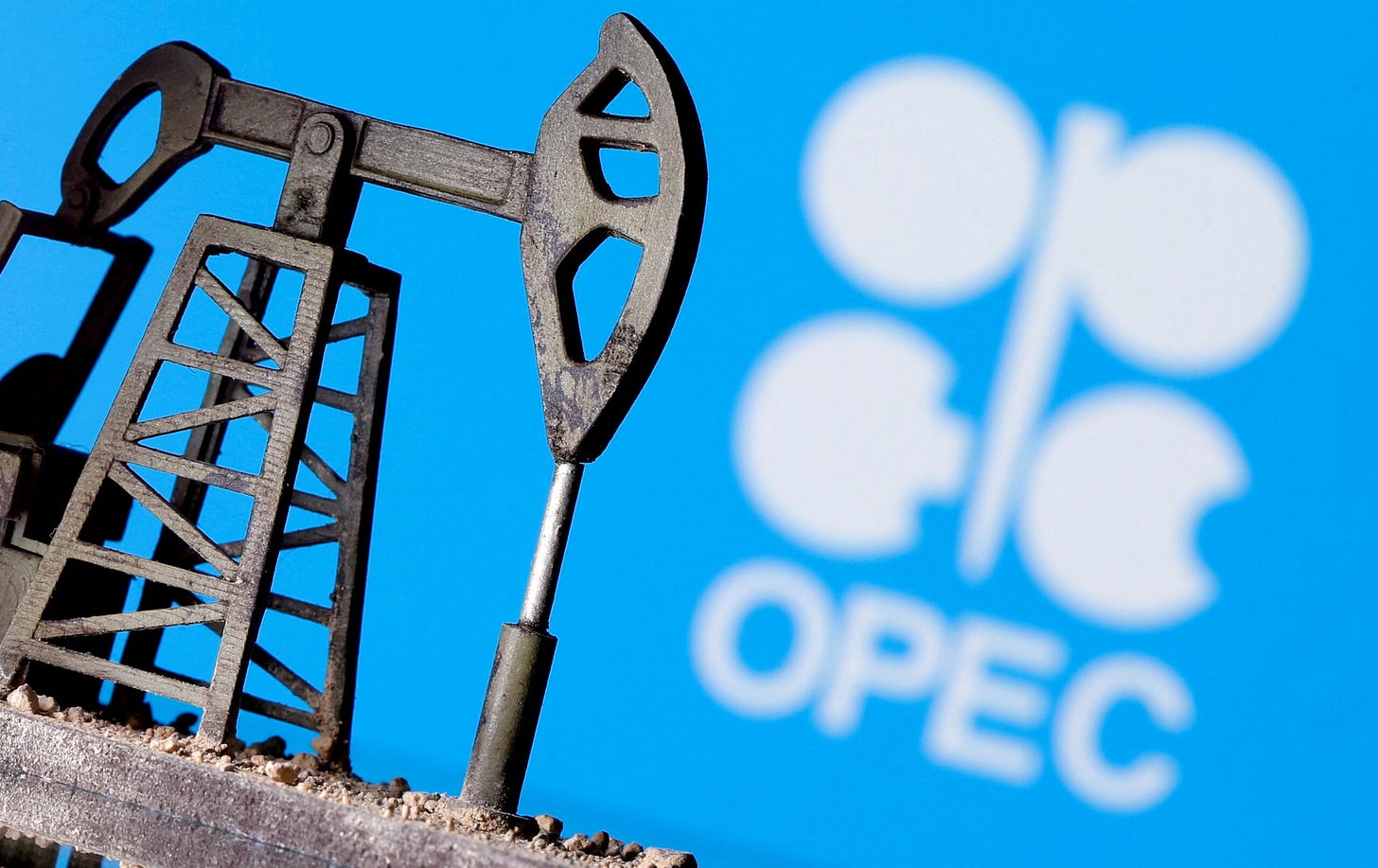What does the OPEC+ increase of 411,000 mean to the United States?
The OPEC+ decision to increase oil production, as seen in recent moves like the accelerated hike of 411,000 barrels per day (bpd) in May 2025, has several immediate and longer-term effects on the global oil market. Here’s a breakdown based on current dynamics and historical patterns:
Downward Pressure on Oil Prices: The sudden tripling of planned output increases, far exceeding the expected 135,000 bpd, led to a sharp drop in oil prices, with Brent crude falling over 6% to below $70 per barrel and West Texas Intermediate dropping to around $65.30. This reflects basic supply and demand: more oil on the market, especially amid weak demand signals, pushes prices down. Posts on X and reports note prices dipping toward three-year lows, with some speculation of Brent teasing the $50s if the trend continues.
Response to External Pressures: The decision appears partly driven by political pressures, notably from U.S. President Donald Trump, who has consistently pushed OPEC+ to boost production to lower prices for American consumers. Analysts suggest Saudi Arabia, a key OPEC+ player, may be adjusting its strategy to avoid conflict with the U.S., especially given Trump’s tariff announcements and threats of sanctions on countries like Iran and Venezuela, which could otherwise tighten supply. This geopolitical angle complicates OPEC+’s usual market-balancing act.
Compliance and Quota Issues: The production hike also serves as a disciplinary measure for OPEC+ members like Kazakhstan, Iraq, and Russia, who have been overproducing beyond their quotas. By flooding the market, Saudi Arabia and others may be signaling to these “cheaters” that non-compliance risks crashing prices, hurting everyone’s revenues. This internal tension within OPEC+ underscores the challenge of maintaining cartel discipline when individual members prioritize short-term gains.
Market Oversupply Risk: With non-OPEC+ countries like the U.S., Canada, Brazil, and Guyana ramping up production (forecast to grow by 1.8 million bpd in 2025), the global oil market faces a potential surplus. The International Energy Agency (IEA) estimates supply could exceed demand by 600,000 bpd in 2025, and OPEC+’s additional output could add another 400,000 bpd if overproduction persists. This surplus, combined with weaker demand forecasts (OPEC cut its 2025 demand growth forecast to 1.30 million bpd due to U.S. tariffs and economic slowdown), heightens the risk of sustained low prices.
Economic and Geopolitical Ripple Effects: Lower oil prices could ease inflationary pressures globally, benefiting consumers and industries reliant on energy. However, they strain oil-dependent economies like Saudi Arabia, which needs Brent prices closer to $100 to fund its economic diversification plans. The production increase also intersects with Trump’s tariff policies, which could dampen global economic growth and oil demand, further depressing prices. Meanwhile, potential sanctions on Iran or relaxed restrictions on Russian oil could add volatility, either tightening or flooding the market depending on outcomes.
OPEC+ Flexibility: OPEC+ has emphasized that these increases are “gradual and flexible,” with the option to pause or reverse them if market conditions worsen. This suggests they’re testing the market while reserving the ability to pivot, especially if demand falters further or geopolitical disruptions (e.g., Middle East tensions) tighten supply.
The Bottom Line
In summary, the OPEC+ production increase is flooding an already fragile market, driving prices down, and risking a sustained oversupply in 2025. It’s a high-stakes move shaped by internal quota disputes, U.S. political pressure, and a bearish demand outlook clouded by trade wars. While consumers may see short-term relief at the pump, oil producers face leaner profits, and the market remains vulnerable to sudden shifts from sanctions, tariffs, or OPEC+’s next meeting on May 5, 2025, where further hikes are reportedly under discussion.
The secondary key point is that OPEC+ has lost enforcement control over its members, as many are using their oil production to finance their respective government programs. On the capitalist side, or in the United States, it is up to the private and public companies to balance the fiscal responsibility to give money back to their shareholders, and will slow down or increase production based on the supply and demand side of the equation. This is a much better formula, and I view this as a short-term problem.
The Trump Tariff war will be over soon, and stability will return to the markets. It will still be a bumpy summer, but investing in the United States oil and gas markets is still one of the best returns available.
And that is The Crude Truth.



